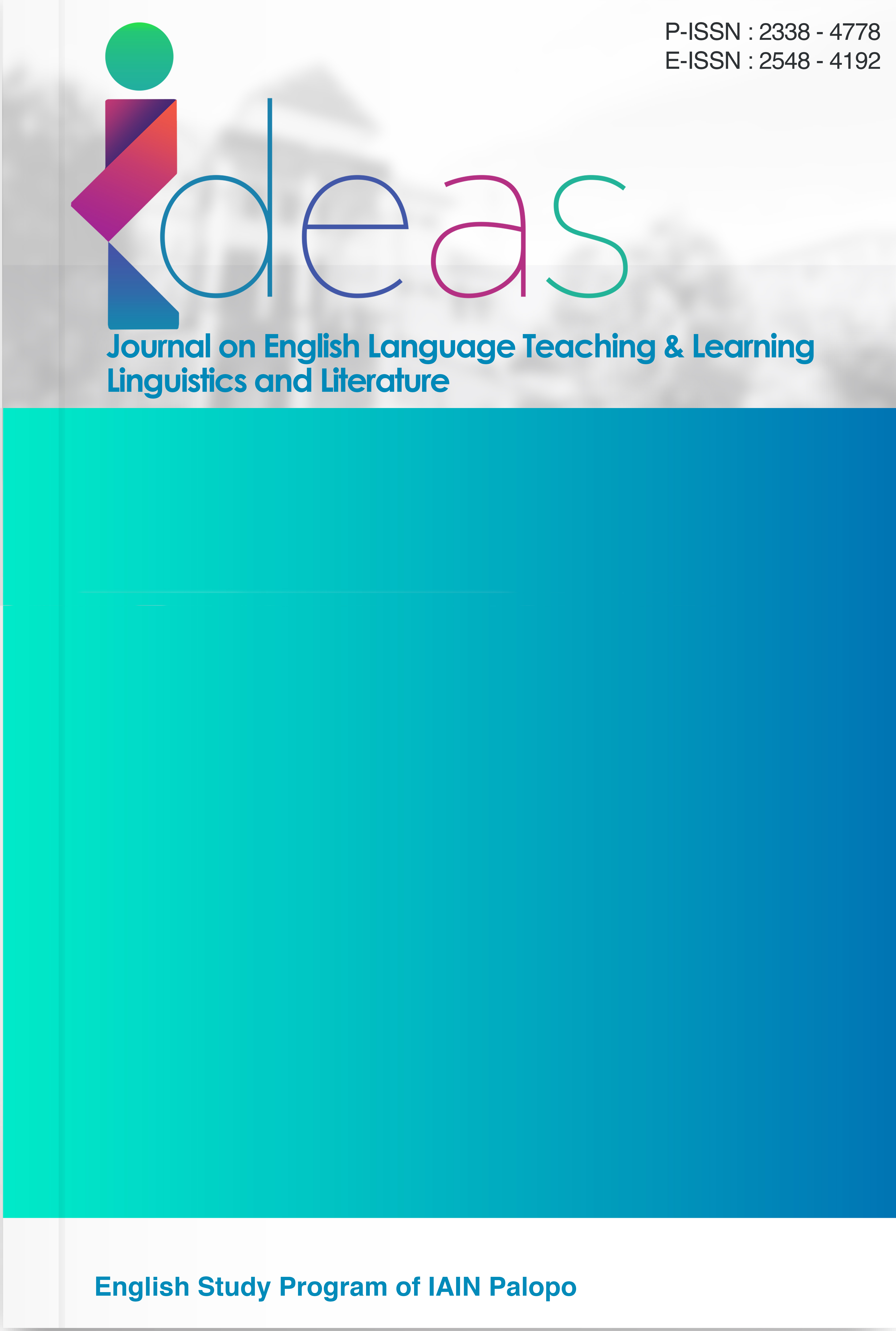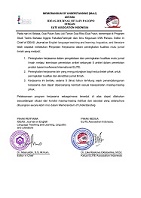A Deixis Analysis In The Song Lyrics Of Night Changes By One Direction
DOI:
https://doi.org/10.24256/ideas.v13i2.7680Keywords:
Deixis; Pragmatics; Song Lyrics; Discourse; One Direction.Abstract
This study investigates the types and pragmatic functions of deixis in One Direction’s song “Night Changes.”Using a qualitative analysis content method, the research applies Levinson’s (1983) typology of person, time, place, discourse, and social deixis. The data were collected from the official lyrics and analyzed using Miles and Huberman’s (1994) model of data reduction, display, and conclusion drawing. A total of 39 deictic expressions were identified, consisting of person deixis (22 instances), time deixis (8), place deixis (4), discourse deixis (3), and social deixis (2). The findings show that person deixis is the most frequent, highlighting the narrative perspective and interpersonal involvement between the singer and the listener, while social deixis is the least frequent, reflecting the informal tone of the lyrics. This study demonstrates how deixis constructs narrative flow and emotional engagement in pop lyrics, with practical use in EFL classrooms and translation studies.
References
Creswell, J. W. (2014). Research design: Qualitative, quantitative, and mixed methods approaches (4th ed.). Thousand Oaks, CA: Sage Publications.
Fadilah, A. R., & Resmini, S. (2021). An Analysis of Deixis Found in Taylor Swift’s Song “Lover.” PROJECT (Professional Journal of English Education), 4(3), 493–500. https://doi.org/10.22460/project.v4i3.p493-500
Fillmore, C. J. (1997). Lectures on deixis. Stanford, CA: CSLI Publications.
Indriani, D., & Widianingsih, N. (2023). Deixis analysis in Shania Yan’s song “Nothing’s Gonna Change My Love for You.” Journal of English Language Teaching and Applied Linguistics, 5(2), 189–197. https://doi.org/10.32996/jeltal.2023.5.2.21
Keo, J. S. A., Simamora, A., Br. Siahaan, M., Panjaitan, C., Manik, R., & Herman, H. (2023). A discourse analysis on deixis used in “Night Changes” song by One Direction. Journal of English Language and Education, 8(1), 27–33. https://doi.org/10.31004/jele.v8i1.331
Kusumadewi, N. D., & Anggraeni, S. (2020). A deixis analysis of Pamungkas’ song lyric “One Only.” Rainbow: Journal of Literature, Linguistics and Cultural Studies, 9(2), 108–116. https://doi.org/10.15294/rainbow.v9i2.39202
Levinson, S. C. (1983). Pragmatics. Cambridge University Press.
Mey, J. L. (2001). Pragmatics: An introduction (2nd ed.). Oxford, UK: Blackwell Publishing.
Miles, M. B., & Huberman, A. M. (1994). Qualitative data analysis: An expanded sourcebook (2nd ed.). Thousand Oaks, CA: Sage Publications.
Official YouTube Channel of One Direction. (2014, November 21). Night changes [Music video] [Video]. YouTube. https://www.youtube.com/watch?v=s-yG-8CkJ58
One Direction. (2014). Night changes [Lyrics]. Genius. https://genius.com/One-direction-night-changes-lyrics
Satyadewi, N. P. M., Ayomi, P. N., & Sulatra, I. K. (2023). An analysis of deixis in Avicii’s song lyric. Journal of Language and Applied Linguistics, 4(2), 122–134. https://doi.org/10.22334/traverse.v4i2.95
Yule, G. (1996). Pragmatics. Oxford University Press.
Downloads
Published
Issue
Section
Citation Check
License
Copyright (c) 2025 Nurul Fauziyah Ziah, Desy Rusmawaty, Susilo Susilo, Dyah Sunggingwati, Ventje Kalukar

This work is licensed under a Creative Commons Attribution-ShareAlike 4.0 International License.
Authors retain copyright and grant the journal right of first publication with the work simultaneously licensed under an Attribution-ShareAlike 4.0 International (CC BY-SA 4.0) that allows others to share the work with an acknowledgement of the work's authorship and initial publication in this journal.
Authors are able to enter into separate, additional contractual arrangements for the non-exclusive distribution of the journal's published version of the work (e.g., post it to an institutional repository or publish it in a book), with an acknowledgement of its initial publication in this journal.
Authors are permitted and encouraged to post their work online (e.g., in institutional repositories or on their website) prior to and during the submission process, as it can lead to productive exchanges, as well as earlier and greater citation of published work (See the Effect of Open Access)




